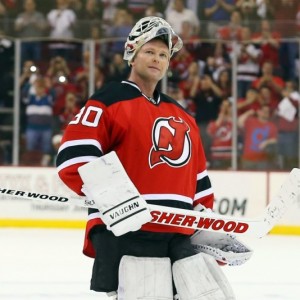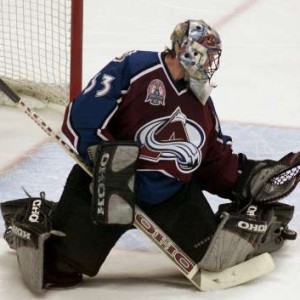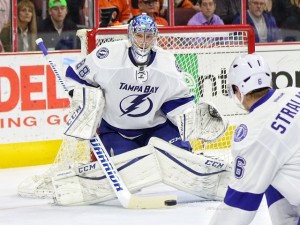You can’t win without good goaltending, as the saying goes. Every year, it seems as if a handful of the best teams in the league are held up by outstanding goaltending performances. For teams that suffered through a disappointing year, goaltending can make or break a season. Last year, the Montreal Canadiens finished first in their division on the back of an MVP performance from backstop Carey Price. However, this season, Price was limited to just 12 games for the Canadiens due to a knee injury, and Montreal plummeted in the standings, finishing 6th in their division with 28 points fewer than last year’s first place team.
The importance placed upon the goaltending position has only increased in the NHL over the last few seasons as scoring across the league has fallen and the premium placed on durable and talented goalies has risen. However, the future of the goaltending position in the NHL is in great shape thanks to a combination of fantastic performances by veteran goalies and an influx of young, promising backstops.

The Fall of Goal Scoring
Goaltending has evolved in leaps and bounds since the high-scoring years of the 1980s. Goal scoring records were being set, with superstars like Mario Lemieux and Wayne Gretzky easily potting 50- and 60- goal seasons while facing goaltending talent that was subpar, to say the least. However, in today’s NHL, goal scoring is down and Alexander Ovechkin stands alone as the only 50 goal scorer the NHL has seen since the 2011-2012 season. Meanwhile, the average team scored the least goals per game since 2004, and the average save percentage across the league was the highest it’s been since the save percentage stat was introduced in 1984.
One can reasonably conclude that one of the main contributing factors to one of the NHL’s lowest-scoring seasons since the infamous “Dead Puck” era is the drastic increase in the talent level of goaltending across the league. In addition, the average size of the NHL goalie has seen a noticeable increase, despite the standard league net remaining at 4 by 6 feet since its last change in 1980. Today’s average goalie stands around 6’2″, a far cry from the NHL’s high-scoring days of the 1980s, when the average goaltender stood just under 5’11” in height. Gone are the days of the small, quick goaltender such as Grant Fuhr (5’10”) and Ed Belfour (5’11”) running the league, and it seems as if the NHL is changing the way they scout and project young goalies. Of the 23 goalies selected in the 2015 NHL Entry Draft, none were under 6’0″ in height, with the shortest of the bunch standing 6’1″ (Luke Opilka, 146th overall).
Further adding to the new trend in goaltending has been the recent success of the modern, athletic goaltender blessed with great size. Last season’s Vezina winner, as well as each of the last three, has been at least 6’2″. Simply put, goalies with a large frame are able to cover more of the net than those lacking in size. Goalies such as Price, as well as likely Vezina finalists this season in Ben Bishop and Braden Holtby, combine great size and athleticism needed to make tough saves night after night.
The Modern NHL Goalie
Throughout the years, the nuances of the goalie position have changed. For years, the stand up goaltending style was the prevailing choice for NHL goaltenders, until Patrick Roy and his longtime coach Francois Allaire popularized the butterfly goaltending style in the 1980s. For years, the butterfly remained a popular style of play amongst NHL goalies, but the never before seen talent and skill of NHL skaters now had forced somewhat of an alteration in this goaltending style.

Nowadays, the increasing speed and physicality of hockey has forced NHL goalies to adopt what’s known as a “hybrid” goaltending style. While the butterfly goaltending style was designed to stop low shots (as Allaire believed that 75% of all shots are along the ice), the difference in skill level between an average NHL shooter today and the common NHL sniper back when Patrick Roy was backstopping the Montreal Canadiens has necessitated a change in philosophy for goalie coaches in the NHL looking to gain an edge. As former NHL goalie Corey Hirsch explains it, the hybrid butterfly style is a mix of both the old-school stand up goalie and the modern butterfly goalie, allowing goaltenders utilizing it to effectively make stops along the ice and then quickly get back to position to stop additional chances up high.
Watch below as Price makes a signature save against the Calgary Flames in the 2013-2014 season. He initially drops into the butterfly position when he sees the first shot coming, but when he realizes the puck has changed course, Price uses his elite athleticism and large frame to push across the crease while maintaining a tough target to shoot at for the Flames’ Curtis Glencross.
https://www.youtube.com/watch?v=FtXhxPYifuU
It’s the ability to consistently stop second and third chances that separates today’s elite goaltenders from those in the past. And while some can point to smaller goaltenders such as Dominik Hasek or Tim Thomas as an argument against size being an important factor, it could be argued that undersized goalkeepers need to be rare athletes who can withstand the rigors of a long NHL season without the added strength that larger netminders are able to carry. The fact that only two goalies who stand under six feet tall were able to crack 15 games played during this past season only speaks to the increasing difficulty for an undersized goalkeeper to find NHL success.
A Wealth of Talent
Perhaps never before has the NHL had so many quality netminders than the league does right now. Several backup goaltenders have at one point in their career been starters for other clubs, and many teams make it a priority to carry two goalies that can carry a heavy workload in case of injury problems. Generally speaking, goalies are able to sustain a high level of play at an older age than most skaters. Tim Thomas is a great example of a late bloomer at the position; he didn’t play his first full season until he was 31 and won his first Vezina trophy when he was 34. This season, 36-year old Roberto Luongo led the Florida Panthers to their first playoff berth since 2012. Other goalies who have been stars in this league for a long time, such as Henrik Lundqvist and Pekka Rinne, also continued to be durable starters for playoff teams this year.
It’s not just the vets turning heads with their play this season; many of the NHL’s top goaltenders are young and just entering their primes, showcasing that the top talent in the league will be around for years to come. First time All-Star John Gibson looks like the future of the Ducks at the ripe age of 22, and the Tampa Bay Lightning will have a tough choice to make next summer between Ben Bishop and former first-rounder Andrei Vasilevskiy.

On the other hand, it’s now becoming more common than at any point in history for teams seeking a new starting goaltender to find their man languishing as backups on other teams. The most recent example was last summer, when the Sharks coughed up a first round pick to acquire Martin Jones from the Bruins, and Jones went on to appear in 65 games for San Jose this season. The Oilers also sent three picks to the New York Rangers in exchange for Cam Talbot, who subsequently signed a 3 year extension with Edmonton in January. For teams that may need help at the goaltending position in the near future, such as the Toronto Maple Leafs or the Calgary Flames, it’s comforting to know that several quality goaltenders should be hitting the market soon. As a result of John Gibson staking a strong claim to the title of starter in Anaheim, current backup Frederik Andersen could be available as a trade target. Andersen is no slouch, either, as he led Anaheim to the conference final against eventual champion Chicago with a strong performance in net.
With the depth and quality of goaltending talent in the NHL these days, it seems as though goaltending isn’t as important to the success of a team as it once was. Chicago, the closest this generation has to a dynasty, have long relied on the overpowering strength of their lineup to get the job done, only seeing Corey Crawford blossom into an elite goaltender over the past two seasons. However, with the collective performance of the NHL’s goaltenders improving year after year, it’s never been more important for a team with hopes of Stanley Cup contention to get their hands on an above-average starting goaltender. Luckily for them, with the assortment of goaltending talent already in the NHL and the amount of promising young talent on its way, there has never been more talent to go around than right now.